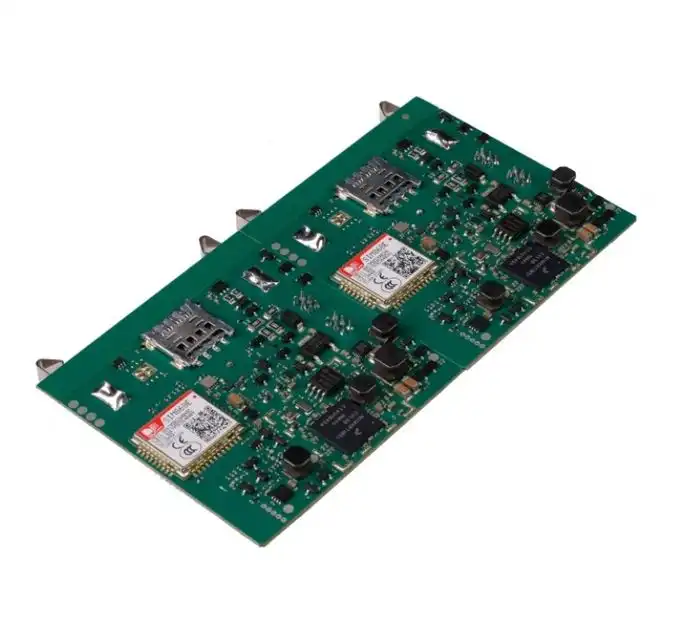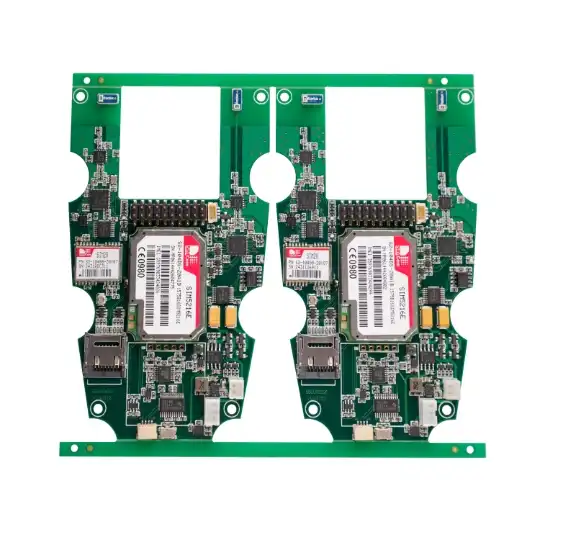How PCBAs Enhance the Functionality of Underwater Robots?
PCBAs (Printed Circuit Board Assemblies) significantly enhance the functionality of underwater robots by providing compact, reliable, and efficient electronic control systems. These specialized assemblies are designed to withstand the harsh deep-sea environment, offering waterproofing, pressure resistance, and corrosion protection. PCBAs integrate sensors, communication modules, and power management systems, enabling underwater robots to navigate, collect data, and perform complex tasks autonomously. The advanced robotics PCB assembly techniques used in these applications ensure optimal performance and longevity in challenging underwater conditions.

The Role of PCBAs in Underwater Robotics
Integration of Sensors and Communication Systems
PCBAs play a crucial role in integrating various sensors and communication systems within underwater robots. These compact electronic assemblies house and interconnect essential components such as pressure sensors, temperature gauges, and acoustic transducers. By utilizing advanced robotics PCB assembly techniques, manufacturers can create dense, multi-layer boards that accommodate a multitude of sensors in a space-efficient manner.
The integration of these sensors allows underwater robots to gather vital data about their surroundings, including depth, water temperature, and obstacles. Furthermore, PCBAs facilitate the incorporation of sophisticated communication modules, enabling robots to transmit collected data to surface vessels or relay information between multiple underwater units. This seamless integration of sensing and communication capabilities is fundamental to the autonomous operation of underwater robots in various applications, from scientific research to offshore industrial inspections.
Power Management and Distribution
Effective power management is critical for the operation of underwater robots, and PCBAs are at the heart of this functionality. The robotics PCB assembly process for underwater applications involves designing circuits that can efficiently distribute power to various subsystems while minimizing energy loss. These assemblies often incorporate advanced power management ICs (Integrated Circuits) that regulate voltage levels and optimize power consumption based on the robot's operational state.
PCBAs also facilitate the integration of energy storage solutions, such as high-capacity batteries or supercapacitors, directly onto the board. This integration allows for more compact and efficient robot designs. Additionally, the power distribution circuits on these assemblies often include safeguards against short circuits and overloading, which are crucial for maintaining the integrity of the robot's electrical systems in the unpredictable underwater environment.
Control and Processing Capabilities
The brain of an underwater robot resides within its PCBA, where microprocessors and specialized ICs work together to process sensor data, make decisions, and control actuators. Advanced robotics PCB assembly techniques allow for the integration of powerful, yet energy-efficient processors that can handle complex algorithms for navigation, obstacle avoidance, and mission planning.
These control systems often incorporate redundancy and fault-tolerance features to ensure reliable operation in critical underwater missions. For instance, dual-core processors or backup control circuits may be implemented to maintain functionality even if one system fails. The PCBA design also considers the need for real-time processing, incorporating high-speed bus systems and optimized signal routing to minimize latency in control responses, which is crucial for the agile maneuvering required in dynamic underwater environments.
Challenges in Designing PCBAs for Underwater Robots
Waterproofing and Pressure Resistance
One of the primary challenges in designing PCBAs for underwater robots is ensuring their ability to function in high-pressure, water-saturated environments. The robotics PCB assembly process for these applications involves several specialized techniques to achieve waterproofing and pressure resistance. Conformal coatings, such as epoxy or silicone-based compounds, are applied to the assembled boards to create a protective barrier against water ingress.
Additionally, the PCB substrate material and component selection must account for the extreme pressures encountered at great depths. High-density, pressure-resistant materials are often used for the board itself, while components are carefully chosen for their ability to withstand compression. The layout of components on the board also plays a crucial role, with designs often incorporating reinforced areas around critical components to distribute pressure evenly and prevent flexing or deformation of the board under extreme conditions.
Thermal Management in a Liquid Environment
Effective thermal management presents another significant challenge in underwater robotics PCB assembly. Unlike in air, where convection plays a major role in heat dissipation, underwater environments require different approaches to manage component temperatures. PCB designers must consider the thermal conductivity of water and develop strategies to efficiently transfer heat from components to the surrounding liquid medium.
Techniques such as using thermally conductive materials for board substrates, implementing heat-spreading layers within multi-layer boards, and strategic placement of high-heat-generating components are commonly employed. Some advanced designs even incorporate miniature liquid cooling systems within the robot's housing, with the PCBA designed to interface directly with these cooling mechanisms. Proper thermal management is crucial not only for maintaining optimal performance but also for ensuring the longevity of electronic components in the harsh underwater environment.
Electromagnetic Interference (EMI) Shielding
Electromagnetic interference can be particularly problematic in underwater environments, where robots often rely heavily on sensitive electronic sensors and communication systems. The robotics PCB assembly process for underwater applications must therefore incorporate robust EMI shielding techniques. This often involves the use of multi-layer PCB designs with dedicated ground planes and careful signal routing to minimize interference between different sections of the circuit.
Additionally, specialized shielding materials may be incorporated into the PCB design or applied as external coatings. These materials can include metal-infused polymers or thin metal sheets that effectively block electromagnetic radiation. The challenge lies in balancing the need for effective shielding with the requirements for waterproofing and pressure resistance, often resulting in complex, multi-layered protection schemes that are integral to the PCBA design.
Future Trends in Underwater Robotics PCB Assembly
Miniaturization and Increased Functionality
The trend towards miniaturization in robotics PCB assembly is particularly relevant for underwater applications, where space and weight constraints are often critical. Advanced manufacturing techniques, such as high-density interconnect (HDI) and flexible PCB technologies, are enabling the creation of increasingly compact and lightweight PCBAs without sacrificing functionality.
This miniaturization trend is driving the development of smaller, more maneuverable underwater robots capable of accessing previously unreachable areas. Furthermore, the reduced size and weight of PCBAs allow for the integration of additional sensors, more powerful processors, or larger battery capacities within the same robot form factor, significantly enhancing overall capabilities.
Integration of AI and Machine Learning Capabilities
The integration of artificial intelligence (AI) and machine learning capabilities into underwater robotics PCB assemblies represents a significant advancement in the field. These technologies enable robots to adapt to changing underwater conditions, make autonomous decisions, and perform complex tasks with minimal human intervention.
To support these advanced capabilities, robotics PCB assembly techniques are evolving to incorporate specialized AI processors and high-capacity memory modules. These components must be carefully integrated to maintain the PCB's resilience to underwater conditions while providing the necessary processing power for real-time AI computations. The implementation of AI in underwater robots opens up new possibilities for applications such as intelligent environmental monitoring, automated underwater maintenance, and advanced oceanographic research.
Advancements in Materials and Manufacturing Processes
The field of underwater robotics PCB assembly is seeing continuous advancements in materials and manufacturing processes. Novel substrate materials with enhanced thermal properties and improved resistance to water absorption are being developed, allowing for more durable and efficient PCBAs. Additionally, advancements in 3D printing technologies are beginning to impact PCBA design, enabling the creation of complex, three-dimensional circuit structures that can be optimized for specific underwater applications.
Manufacturing processes are also evolving, with increased automation and precision in assembly techniques. Advanced pick-and-place machines, capable of handling a wider range of component sizes and types, are improving the consistency and reliability of PCBAs for underwater robots. These advancements in materials and manufacturing are crucial for creating the next generation of underwater robots capable of operating in even more challenging environments and performing increasingly complex tasks.
Conclusion
PCBAs are integral to enhancing the functionality of underwater robots, providing the essential electronic infrastructure for sensing, communication, power management, and control. As robotics PCB assembly techniques continue to advance, we can expect to see underwater robots with even greater capabilities, able to explore deeper waters, perform more complex tasks, and provide invaluable insights into our planet's aquatic environments. The ongoing developments in miniaturization, AI integration, and advanced materials promise a future where underwater robots play an increasingly crucial role in oceanographic research, environmental monitoring, and underwater industrial operations.
Reliable signal & power integrity in harsh deep-sea environments | Ring PCB
Ring PCB Technology Co., Limited specializes in delivering innovative PCB & PCBA solutions for challenging environments like deep-sea applications. With 17 years of expertise, we offer comprehensive services including PCB fabrication, component sourcing, and full turn-key assembly. Our advanced engineering capabilities include high-density stack-ups up to 48 layers, precision impedance control, and adherence to stringent IPC standards. Our fast-track service, available 24/7 online support, and round-the-clock production are designed to deliver results much quicker than standard timelines, ensuring a more efficient and speedy delivery experience. For reliable underwater PCBA one-stop solution, contact us at [email protected].
References
1. Johnson, M. R., & Allison, J. (2019). Underwater Robotics: Science, Design & Fabrication. Marine Technology Society Journal, 53(1), 5-18.
2. Zhang, Y., & Ryan, J. P. (2020). Advances in PCB Design for Marine Robotics Applications. IEEE Journal of Oceanic Engineering, 45(3), 892-904.
3. Antonelli, G., & Fossen, T. I. (2018). Underwater Robotics. In Springer Handbook of Robotics (pp. 1613-1645). Springer, Cham.
4. Li, W., & Xiao, J. (2021). PCB Assembly Techniques for Harsh Environment Applications in Underwater Robotics. International Journal of Advanced Robotic Systems, 18(2), 1729881421999581.
5. Roberts, S. E., & Smith, C. M. (2017). Power Management Strategies in Underwater Robotic Systems: A Review. Ocean Engineering, 141, 190-204.

Welcome to Ring PCB! Share your inquiry, and receive a tailored quotation!

Ring PCB, your trusted partner for PCB & PCBA Full Turnkey Solutions



